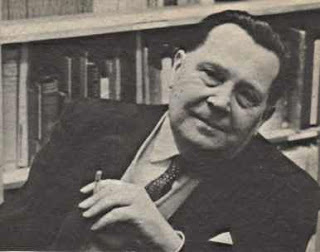|
Imprint: Triarchy Press
Published: 2008 List Price: £20.00 Offer Price: £16.00 Format: Paperback Extent: 232pp. Size: 15 x 23 cm ISBN: 978-0-9550081-6-0 Tags: Innovation, Teamwork, Design Thinking, The Economist Inside Project Red Stripe: Incubating Innovation and Teamwork at The Economist Andrew Carey Book Page About the author Contents Buy the book
Paperback:
|
EquifinalityFrederick Taylor (right), the father of scientific management and a modernist to the core, believed that there was 'one best way' to do anything. (This was the underlying principle of the ideology of technocracy.) He was a closed systems man.
The ineffably named Ludwig von Bertalanffy (below), one of the founding fathers of what we now call Systems Thinking, was an open systems man. He looks jollier to me. (Perhaps it's because he looks as if he's a one-buttock player, to use Benjamin Zander's term.) Bertalanffy proposed that:
Every living organism is essentially an open system. It maintains itself in a continuous inflow and outflow, a building up and breaking down of components, never being, so long as it is alive, in a state of chemical and thermodynamic equilibrium but maintained in a so-called steady state which is distinct from the latter...He maintained that, in an open system, 'the same final state may be reached from different initial conditions and in different ways'. Which theory is called equifinality - different paths to the same destination. So there's the science. Actually there's more. It's called the neo-Schumpeterian theory of complexity and innovation. Most of it is stultifyingly boring. I only mention it because, said right, I believe it can have the same effect as Kevin Kline saying, 'Le due cupole grandi della cattedrale di Milano'. But there's some interesting stuff in there. Joseph Schumpeter devoted more effort to the study of innovation than any other economist in the first half of the twentieth century. He coined the term unternehmergeist to describe the spirit of entrepreneurship that drives technological innovation (which was, of course, a different sort of becoming-animal in the 1940s from what it is now). He argued that innovation was driven by entrepreneurial individuals and, as economies developed and expanded, by large corporations.
Accordingly, he developed a bias in favour of explanations of innovation that were based on the character and determination of outstanding individuals and defined innovations as 'Acts of Will'. This idea that an act of will is more important than an act of knowledge or intelligence is an interesting one. It's also old fashioned. But, though unfashionable, it's still relevant: put six other people in that room on the Marylebone Road for six months and something utterly different would have happened - though they might, using the theory of equifinality, have arrived at the same destination. It's why I've talked at length in other sections about motivation and incentives and other prerequisites of an act of will (which Fichte says is the primary impulse of Pure Ego, the purpose of which is the fulfilment of a duty or obligation). Post- and neo-Schumpterians take a different view. Keith Pavitt talks, for example, of: Three broad, overlapping sub-processes of innovation... the production of knowledge; the transformation of knowledge into products, systems, processes and services; and the continuous matching of the latter to market needs and demands. Red Stripe clearly wasn't really in the business of producing or generating new knowledge. The team were overtly looking to see what they could do with what was already out there (which is largely what all Web 2.0 and 3.0 stuff is about) and which is another way of saying 'the transformation of knowledge into products, systems, processes and services'. Where they became inspired, or confused, or changed direction seemed to me when they started matching these putative products, processes and services to market needs and demands (in still in beta, I've talked about what might have happened if they'd explored market needs first and only looked at products, processes and services later.) In any case, and in conclusion, my suggestion is that the three processes of innovation identified by Pavitt and the neo-Schumpeterians offer a fruitful way of considering innovation. Mike Seery, incidentally, refers to IBM's four types of innovation in his final report, which he describes as 'not a white paper in the traditional sense': Eureka! - true, out-of-the-box innovation Exemplar - pursuing innovation to build reputation and possibly value Best of breed - apply proven concepts across the organisation systematically New to me - apply or adopt changes of value without claiming novelty.An equally useful framework. Dilemmas:
----------------------------------------------------------------------------- Credits: The Benjamin Zander talk is courtesy of TED. |


